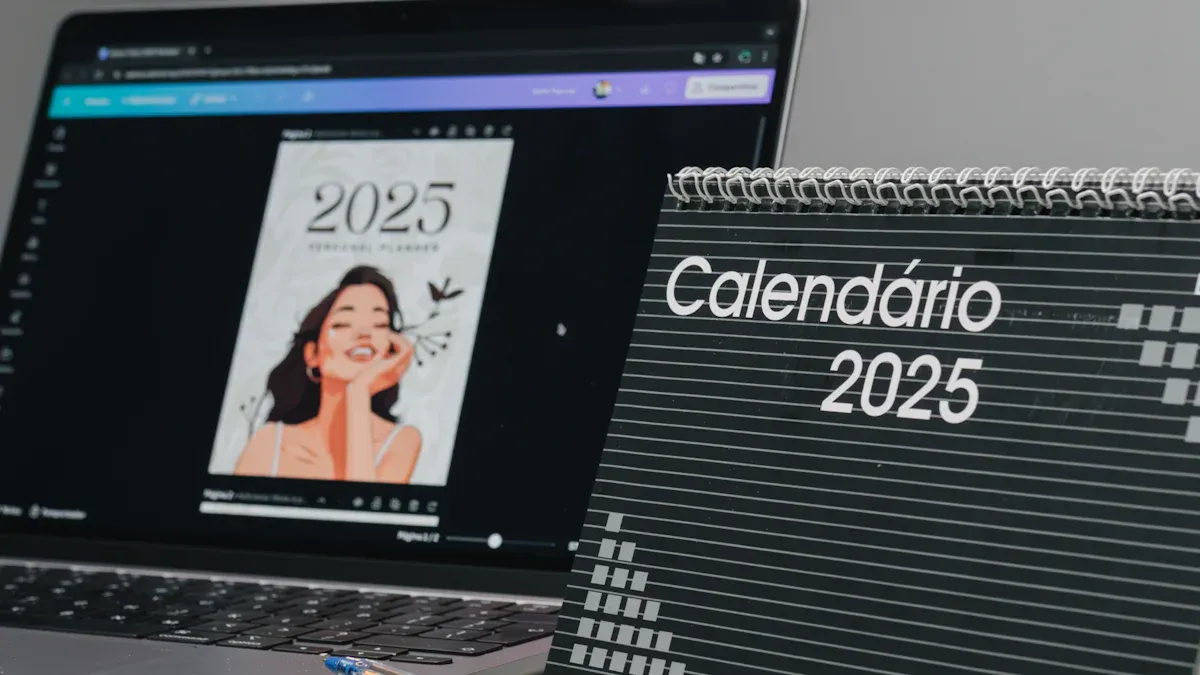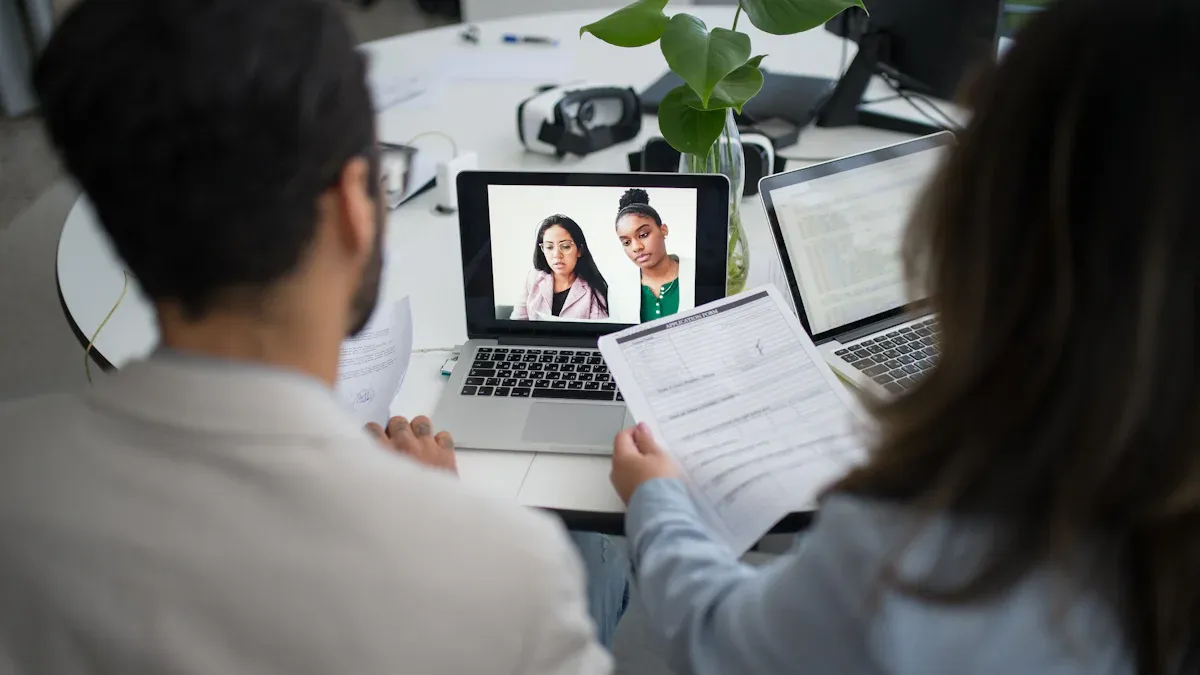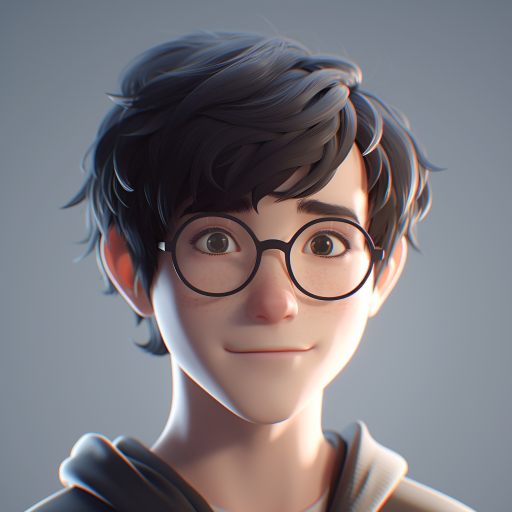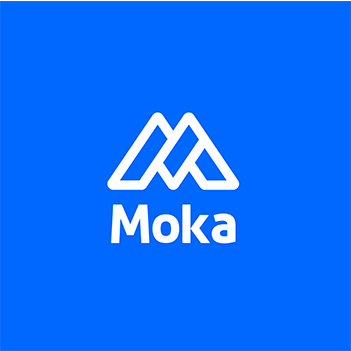The Future of Cover Letters in 2025

The Decline of Cover Letters: Do They Still Matter in 2025? Cover letters in 2025 aren’t what they used to be. You’ve probably noticed how traditional formats feel outdated. In fact, 84% of people think they’re no longer useful. But here’s the twist—18% still believe they matter, especially when tailored to specific roles. This shows that while the old ways are fading, cover letters can still shine if you adapt. Employers now value creativity and authenticity over cookie-cutter templates. So, if you’re willing to rethink your approach, cover letters can still help you stand out in today’s competitive job market.
Key Takeaways
Cover letters are still important in 2025, but they need to match the job to be noticed.
Show creativity and be genuine in your cover letter. Don’t use boring templates without character.
Share stories to link your skills to the company’s goals. Personal stories can make you stand out.
Make your cover letter short. Focus on showing your value quickly and clearly.
Try new formats like video or interactive letters to show your personality and skills better.
The Decline of Cover Letters: Do They Still Matter in 2025?
Why Traditional Cover Letters Are Losing Relevance
Overuse of generic templates
Let’s face it—generic cover letters are everywhere. You’ve probably seen those one-size-fits-all templates that job seekers copy and paste for every application. They’re easy to spot and even easier to ignore. Hiring managers often skim through these letters, if they read them at all. Why? Because they lack personality and fail to show genuine interest in the role. Tools like ChatGPT have made it even simpler to churn out these cookie-cutter letters, but this convenience comes at a cost. When everyone uses the same approach, it’s hard to stand out.
Lack of alignment with modern hiring practices
The hiring world has changed, but traditional cover letters haven’t kept up. Many companies now focus on concise, impactful communication. Platforms like LinkedIn already provide much of the information that cover letters used to include. Plus, some employers are ditching cover letters altogether in favor of targeted questions or video introductions. Younger generations, especially Gen Z, often see cover letters as unnecessary. They prefer direct, personalized messages to hiring managers instead of formal letters.
Tip: If you’re still using a traditional cover letter, it’s time to rethink your strategy. Focus on personalization and creativity to make a lasting impression.
The Role of Technology in Shaping Hiring Trends
Impact of AI and applicant tracking systems (ATS)
AI and ATS have completely changed how companies review applications. These systems scan resumes and cover letters for specific keywords, making it crucial to tailor your content to each job posting. Generic submissions often fail to pass this automated screening. On top of that, the sheer volume of applications means recruiters rely on these tools to save time. This shift has made data-driven, ATS-friendly content more important than ever.
Shift toward concise and impactful communication
Recruiters are busier than ever. They don’t have time to read lengthy cover letters filled with fluff. Instead, they want short, focused messages that highlight your unique value. According to recent trends, 84% of people believe traditional cover letters are outdated, while only 18% think they still hold value. This shows a clear preference for modern, streamlined approaches. Whether it’s a bold opening line or a quick video introduction, the key is to grab attention fast.
Note: The decline of cover letters doesn’t mean they’re useless. It just means you need to adapt to stay relevant.
The Rise of Disruptive Cover Letters

Defining Disruptive Cover Letters
Moving beyond traditional formats to stand out
In 2025, disruptive cover letters are rewriting the rules. They don’t follow the rigid, outdated structures of traditional formats. Instead, they focus on grabbing attention and leaving a lasting impression. Think of them as your chance to break free from the mold and show who you really are. Whether it’s through a bold opening line or a creative format, disruptive cover letters help you stand out in a sea of applicants.
Emphasizing creativity, boldness, and authenticity
What makes a disruptive cover letter so effective? It’s all about creativity, boldness, and authenticity. Employers want to see the real you, not a generic template. A disruptive cover letter lets you showcase your personality and passion. For example, sharing a personal story about how a company’s product impacted your life can create an emotional connection. This approach not only highlights your creativity but also shows you’ve done your homework.
Tip: Don’t be afraid to take risks. A bold, authentic cover letter can make all the difference in a competitive job market.
Essential Elements of a Disruptive Cover Letter
Crafting a bold opening statement
Your opening line is your first impression—make it count. Instead of starting with “I’m excited to apply,” try something unexpected. For instance, “The first time I used your app, I knew I wanted to work here” immediately grabs attention. Bold statements like these show confidence and enthusiasm.
Using storytelling to highlight unique value
Storytelling is the heart of a disruptive cover letter. Share a personal anecdote that ties your skills to the company’s mission. For example, if you’re applying to a food brand, you might recall a childhood memory involving their product. Stories like these create emotional connections and make your application memorable.
Including a clear and compelling call to action
End your cover letter with a strong call to action. Let the employer know you’re eager to discuss how you can contribute. For example, “I’d love the chance to share how my skills align with your team’s goals. Can we schedule a time to connect?” This approach shows initiative and leaves a positive impression.
Note: Disruptive cover letters prioritize storytelling and emotional engagement, making them a powerful tool in today’s job market.
How to Write a Disruptive Cover Letter
Start with a Bold Opening
Examples of attention-grabbing opening lines
Your opening line is your chance to grab attention right away. Instead of starting with something generic like, "I am writing to apply for the position," try something that sparks curiosity or shows enthusiasm. For example:
"The first time I saw your company’s ad campaign, I knew I wanted to be part of your team."
"As someone who thrives on solving complex problems, I couldn’t resist applying for this role."
"Your company’s mission to revolutionize education inspired me to share how I can contribute to your vision."
These lines immediately show your excitement and connection to the company. They also set the tone for a cover letter that stands out from the rest.
Use Storytelling to Showcase Your Skills
Structuring a narrative around your achievements
Storytelling transforms your cover letter from a list of achievements into a memorable narrative. Instead of saying, "I increased sales by 30%," you could share the story behind it. For instance:
"At my previous job, I noticed our online sales were lagging. I proposed a new digital marketing strategy, which included targeted ads and email campaigns. Within six months, our sales jumped by 30%. This experience taught me how to identify problems and create solutions that deliver results."
Stories like this make your skills relatable and help hiring managers visualize your potential contributions. Research shows that storytelling not only makes you more memorable but also helps you connect emotionally with employers.
Tip: Use specific examples and results to back up your story. Numbers and outcomes make your achievements more credible.
Personalize for the Role and Company
Researching the company to tailor your message
Personalization is key to writing a disruptive cover letter. Start by researching the company’s mission, values, and recent projects. Then, weave this information into your letter. For example, if the company values sustainability, mention how your past work aligns with their goals.
Recruiters notice when you take the time to tailor your application. In fact, 83% of recruiters are more likely to hire candidates who personalize their resumes and cover letters. A tailored cover letter shows you’re genuinely interested in the role and understand the company’s needs.
Note: Avoid generic phrases like "I’m a hard worker." Instead, focus on how your skills and experiences align with the company’s specific goals.
End with a Strong Call to Action
Examples of effective closing statements
The way you end your cover letter can make or break your chances of getting noticed. A strong call to action (CTA) isn’t just a polite way to wrap things up—it’s your chance to guide the recruiter toward the next step. Think of it as your final pitch, where you show confidence and enthusiasm for the role.
Here are some examples of effective closing statements you can use to leave a lasting impression:
"I’d love the opportunity to discuss how my skills can contribute to your team’s success. When would be a good time to connect?"
"I’m excited about the possibility of joining your company and would be happy to share more about how I can help achieve your goals. Let’s schedule a time to chat!"
"Thank you for considering my application. I look forward to the chance to discuss how I can bring value to your team. Please let me know a convenient time for us to connect."
Including a CTA in your cover letter isn’t just a formality. It encourages the recruiter to take action, whether that’s scheduling an interview or reaching out for more details. It also shows that you’re eager and proactive about the role.
Tip: Keep your closing statement short and direct. Avoid sounding overly formal or robotic. Instead, let your enthusiasm shine through.
By ending your cover letter with a clear and compelling CTA, you’re not just asking for an opportunity—you’re showing that you’re ready to seize it. This small but powerful step can make all the difference in standing out from other applicants.
Innovative Formats for Cover Letters

Video Cover Letters
Benefits of showcasing personality and communication skills
Video cover letters are gaining popularity because they let you showcase your personality and communication skills in ways a traditional letter can’t. Employers love them because they’re quick and engaging. You can express enthusiasm, confidence, and creativity—all in under two minutes.
Here’s why they work:
There’s been a 57% increase in video use during recruitment from 2019 to 2022.
Hiring managers find videos time-efficient for evaluating candidates.
A video lets you connect on a personal level. It’s like having a mini-interview before the actual one.
Tips for creating a professional and engaging video
Creating a great video cover letter doesn’t require fancy equipment. Follow these tips to make it shine:
Keep it short: Aim for 60-90 seconds.
Be authentic: Speak naturally and let your personality shine.
Focus on lighting and sound: Make sure your face is well-lit and your voice is clear.
Practice your script: Plan what you’ll say, but don’t sound robotic.
Pro Tip: End your video with a strong call to action, like asking for an interview or expressing excitement about the role.
Interactive and Multimedia Cover Letters
Using visuals and links to enhance engagement
Interactive cover letters combine visuals, hyperlinks, and multimedia to grab attention. They’re perfect for showcasing your creativity and skills. For example, you can include links to your portfolio, LinkedIn profile, or even a project you’ve worked on.
Here’s a quick comparison of popular methods:
Method | Description |
|---|---|
Video Cover Letters | Brief video clips to provide a personal introduction of yourself and your capabilities. |
Hyperlinked Documents | URLs of portfolio sites, LinkedIn accounts, or related works. |
QR Codes | A QR code can be added which directs to a website and/or portfolio. |
Interactive formats make it easy for recruiters to explore your work and learn more about you.
Tools and platforms for creating interactive formats
You don’t need to be a tech wizard to create these. Tools like Canva, Adobe Spark, and Visme let you design visually appealing documents. For videos, platforms like Loom or Zoom make recording simple.
Note: Always test your links and multimedia to ensure they work seamlessly. A polished presentation shows you’re detail-oriented and professional.
By embracing these innovative formats, you’ll stand out in a crowded job market.
Cover letters still matter in 2025, but only if you adapt them to today’s hiring trends. By focusing on creativity, personalization, and innovative formats, you can make a lasting impression.
Tailor your letter to the role and company. Recruiters value relevance and connection.
Keep it concise. Short, impactful letters are more likely to grab attention.
Show your adaptability by highlighting transferable skills and emotional intelligence.
When you embrace storytelling and bold approaches, you stand out in a crowded job market. These changes aren’t just trends—they’re your key to success.
Tip: A disruptive cover letter isn’t just about being different. It’s about showing who you are and why you’re the perfect fit.
FAQ
What is a disruptive cover letter?
A disruptive cover letter breaks away from traditional formats. It uses creativity, boldness, and storytelling to grab attention. You focus on showing your personality and unique value instead of sticking to rigid templates. Think of it as your chance to stand out!
Are video cover letters better than traditional ones?
Video cover letters can be more engaging. They let you showcase your personality and communication skills. However, they’re not always necessary. If the job values creativity or interpersonal skills, a video might give you an edge.
How long should a cover letter be in 2025?
Keep it short and sweet—around 250-300 words. Recruiters don’t have time for lengthy letters. Focus on making an impact with a bold opening, a compelling story, and a strong call to action.
Do I still need to personalize my cover letter?
Absolutely! Personalization shows you’ve done your homework. Mention the company’s values or recent projects. Tailor your skills to their needs. Recruiters notice when you make the effort, and it increases your chances of standing out.
What tools can I use to create interactive cover letters?
You can try tools like Canva, Visme, or Adobe Spark for designing visually appealing letters. For videos, Loom or Zoom works great. These platforms make it easy to add creativity and professionalism to your application.
Tip: Always test your interactive elements to ensure they work seamlessly!
See Also
Celebrating HR Innovation and Excellence at the 2024 Sirius Awards
Mastering Team Collaboration Through Effective Applicant Tracking Systems
Transforming Talent Acquisition: The Impact of AI Recruitment Systems
Exploring SaaS Evolution in the AI Era: Insights from 21st Century Business Herald
Unlocking Industry Success with Essential Applicant Tracking System Insights
From recruiting candidates to onboarding new team members, MokaHR gives your company everything you need to be great at hiring.
Subscribe for more information

